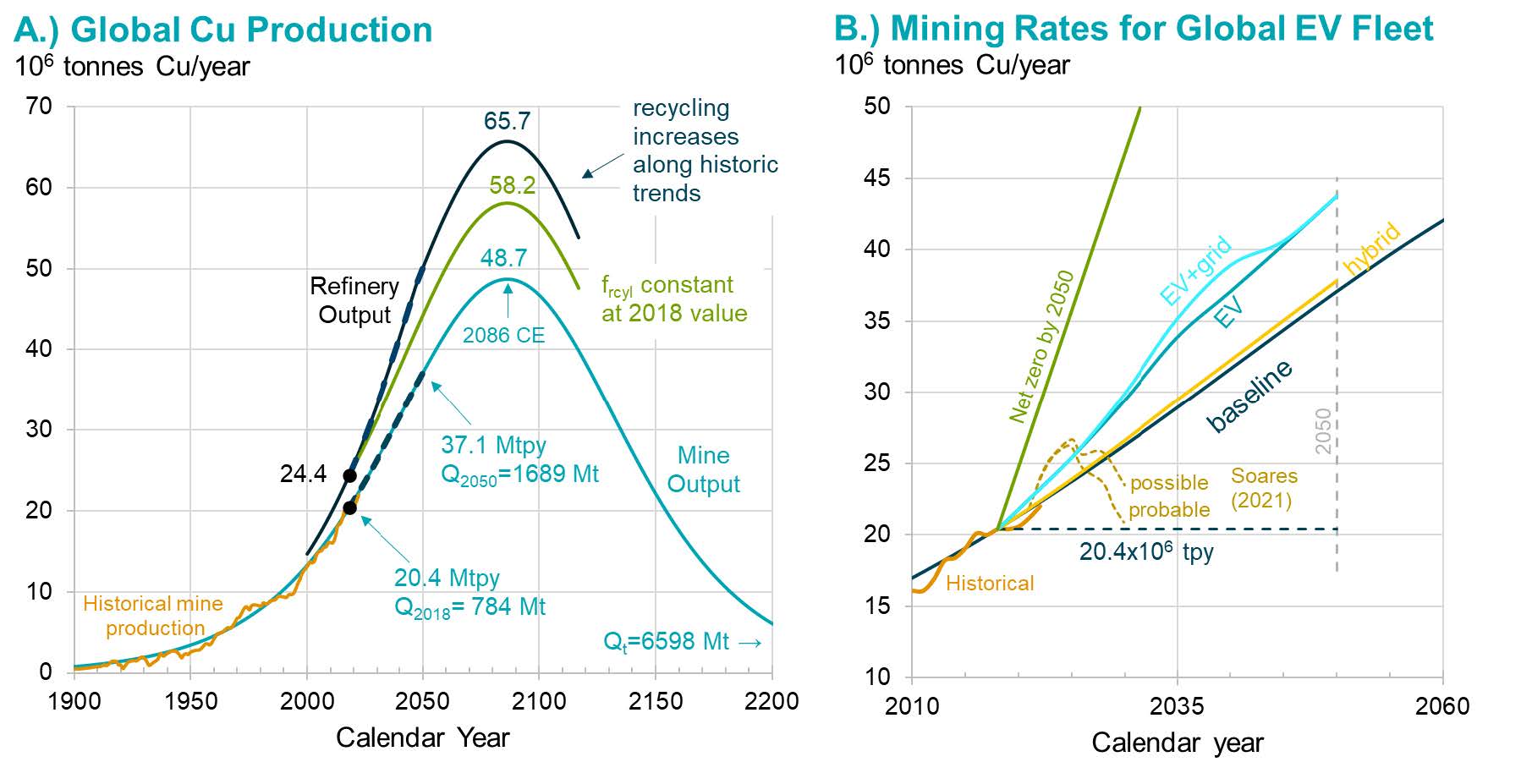Sign up for daily news updates from CleanTechnica on email. Or follow us on Google News!
RIYADH, Saudi Arabia — Targets for 100 percent electric vehicle adoption by 2035 cannot be achieved without an unprecedented acceleration in copper mining, according to the Secretary General of the International Energy Forum Joseph McMonigle.
Copper is the most essential mineral for societal development, but growing electrification needs globally cannot be met if limited supplies of copper are taken up by the huge requirements of electric vehicle batteries, according to a new report published today by the IEF.
“Under today’s policy settings for copper mining, it is highly unlikely that there will be enough additional new mines to achieve 100 percent electric vehicles by 2035, only the first small step toward decarbonization. So we need to manage this transition,” said Mr McMonigle.
“To make the best use of available copper supply, governments should prioritize economy-wide electrification, which is the foundation of climate policy. Moreover, governments need to incentivize and support new copper mine projects because without it, 100 percent adoption of EVs is not an achievable target,” he added.
The report “Copper Mining and Vehicle Electrification”, by leading experts Lawrence M. Cathles and Adam C. Simon, analyzes historical trends in copper demand and mine production. It shows that while copper resources are available, achieving 100 percent manufacture of EVs by 2035 would require unprecedented rates of mine production.
Just to meet business-as-usual trends, without full EV adoption, the world must mine more copper in the next 30 years than it has in all of history until now, the report states. Electrifying the global vehicle fleet would necessitate the opening of another 55 percent more new mines than are already expected to be needed.
“We believe the EV industry will continue to be a significant segment of the market and should continue to thrive based on consumer preference and the growing array of vehicles available, but 100 percent adoption by 2035 is unlikely,” Mr McMonigle said.
Copper plays a vital role in electricity generation, distribution, and storage and electrification is one of the most effective ways of reducing reliance on fossil fuels. But the huge copper requirements of electric car batteries will compete with the electricity needs of countries in the early stages of development.
“Copper demand for EV manufacture could increase the price of copper very substantially and significantly impede the advance of less developed areas,” the report says.
EVs require 60 kg of copper versus 29kg for a hybrid electric and 24kg for a combustion engine vehicle, so switching the global vehicle fleet to hybrid would have a negligeable impact on copper demand.
The report cites a February 2024 report by the American Council for an Energy-Efficient Economy showing that EVs and hybrids scored similarly based on their cost to human health from air pollution associated with vehicle manufacturing and disposal, the production and distribution of fuel or electricity, and vehicle tailpipe emissions.
The IEF report offers a detailed outlook for copper demand and supply showing a significant increase in required copper mining between 2018 and 2050.
“Over this 32-year period the world will need to mine 115% more copper than has been mined in all of human history up to 2018,” the report says. “The future output of existing and new copper mines is mostly needed for the developing world to catch up with the developed world.”
The baseline outlook for copper supply in the report, based on historical trends, sees supply rising by 82 percent by 2050, peaking in 2086, and then falling sharply. However, the report also cites projections based on the pipeline of copper projects, which shows a decline in supply as soon as 2026.
The report argues that mining should be recognized as essential, and exploration and responsible copper mine development strongly encouraged.
It highlights several constraints to lifting copper supply, including limited access to land for mining, low rates of discovery and a 23-year lead time for mines to come into production. Even where significant copper resources have been discovered, many governments have proven reluctant to approve mine permits.
In North America, mine permit applications have been canceled in Alaska, Minnesota and Panama, delayed in Arizona, and substantial acreage has been removed from exploration in Minnesota. The report highlights the case of the underground Resolution copper project in Arizona that would be the largest in North America, producing 500,000 tons per year.
“Despite being approved in 2014 by the U.S. Congress has still not received approval to start producing copper,” the report states.
The mining industry will need to explore and mine deeper to obtain the copper the world needs, the report says. Deeper subsurface mines like Resolution could be remotely mined, which is safer, and have a smaller environmental footprint.


Article from International Energy Forum.
Have a tip for CleanTechnica? Want to advertise? Want to suggest a guest for our CleanTech Talk podcast? Contact us here.
Latest CleanTechnica.TV Videos


CleanTechnica uses affiliate links. See our policy here.







